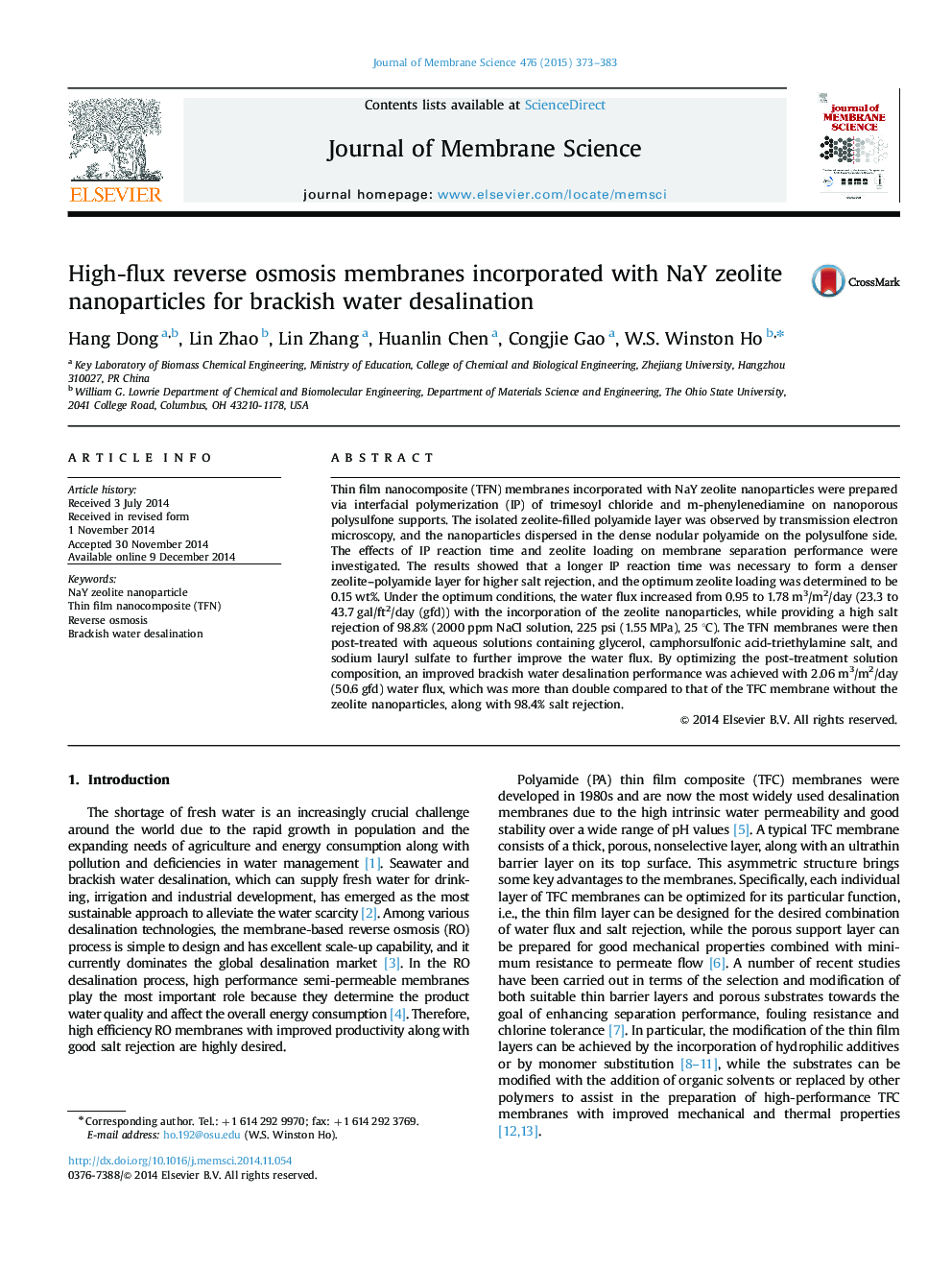| Article ID | Journal | Published Year | Pages | File Type |
|---|---|---|---|---|
| 7021697 | Journal of Membrane Science | 2015 | 11 Pages |
Abstract
Thin film nanocomposite (TFN) membranes incorporated with NaY zeolite nanoparticles were prepared via interfacial polymerization (IP) of trimesoyl chloride and m-phenylenediamine on nanoporous polysulfone supports. The isolated zeolite-filled polyamide layer was observed by transmission electron microscopy, and the nanoparticles dispersed in the dense nodular polyamide on the polysulfone side. The effects of IP reaction time and zeolite loading on membrane separation performance were investigated. The results showed that a longer IP reaction time was necessary to form a denser zeolite-polyamide layer for higher salt rejection, and the optimum zeolite loading was determined to be 0.15 wt%. Under the optimum conditions, the water flux increased from 0.95 to 1.78 m3/m2/day (23.3 to 43.7 gal/ft2/day (gfd)) with the incorporation of the zeolite nanoparticles, while providing a high salt rejection of 98.8% (2000 ppm NaCl solution, 225 psi (1.55 MPa), 25 °C). The TFN membranes were then post-treated with aqueous solutions containing glycerol, camphorsulfonic acid-triethylamine salt, and sodium lauryl sulfate to further improve the water flux. By optimizing the post-treatment solution composition, an improved brackish water desalination performance was achieved with 2.06 m3/m2/day (50.6 gfd) water flux, which was more than double compared to that of the TFC membrane without the zeolite nanoparticles, along with 98.4% salt rejection.
Related Topics
Physical Sciences and Engineering
Chemical Engineering
Filtration and Separation
Authors
Hang Dong, Lin Zhao, Lin Zhang, Huanlin Chen, Congjie Gao, W.S. Winston Ho,
